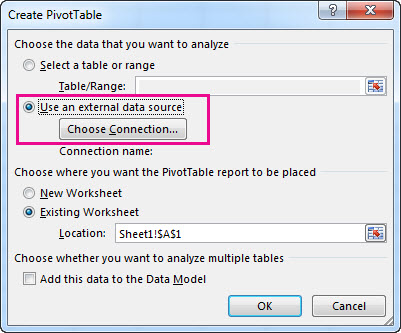
Therefore, for each new PivotTable analysis that uses the same data, Excel saves hard disk space. Maybe this is one step too far for you at this stage, but it shows you one of the many other powerful pivot table features Excel has to offer. In Excel 2003 each Pivot Table had its own Data Cache, but now the Pivot Table that is created using the same Data Model or Data Source as another previously created Pivot Table also borrows that Pivot Tables Data Cache. To easily compare these numbers, create a pivot chart and apply a filter. Next, to get the total amount exported to each country, of each product, drag the following fields to the different areas.īelow you can find the two-dimensional pivot table. If you drag a field to the Rows area and Columns area, you can create a two-dimensional pivot table.

16 out of the 28 orders to France were 'Apple' orders. There will be times when you will be required to analyse large amounts of data and produce easy to read and understand reports. Choose the type of calculation you want to use. Right click and click on Value Field Settings.ģ. Click any cell inside the Sum of Amount column.Ģ. Examples for working on pivot tables in Excel: automatic updating, merging multiple files, grouping by date, adding a calculated field and detailing the data in the reports. Right-click on an open cell and select Paste Special > Paste Values to paste a copy of the table’s headers and values in your worksheet.

To change the type of calculation that you want to use, execute the following steps.ġ. Then, select the PivotTable cells (headings included) and hit Ctrl+C to copy the table to your clipboard. By default, Excel summarizes your data by either summing or counting the items.


 0 kommentar(er)
0 kommentar(er)
